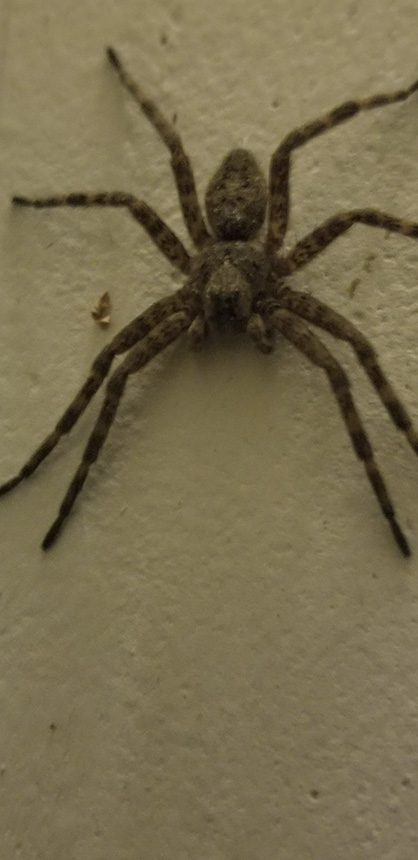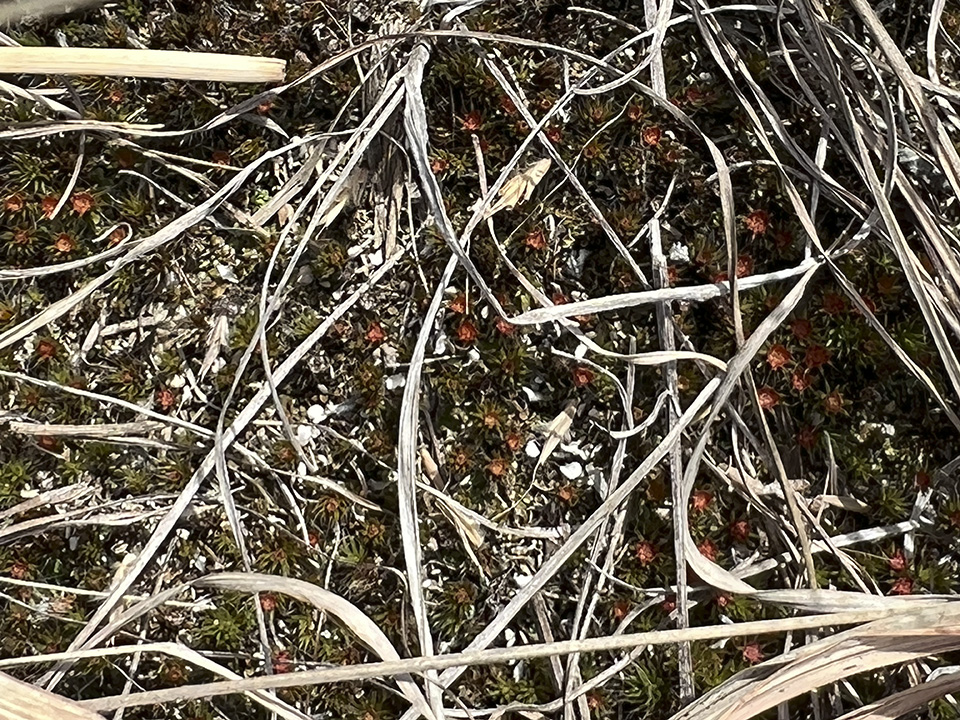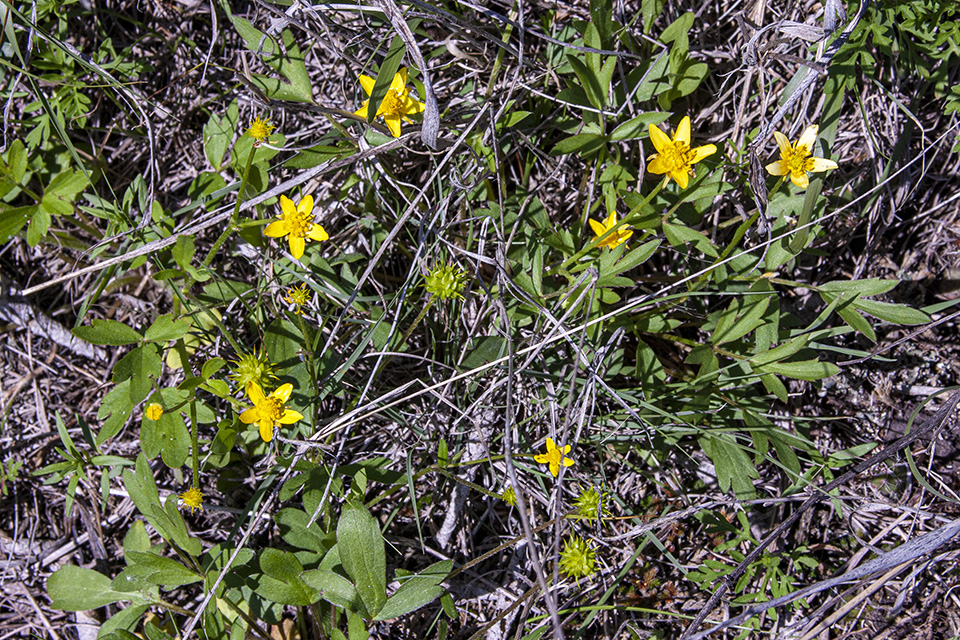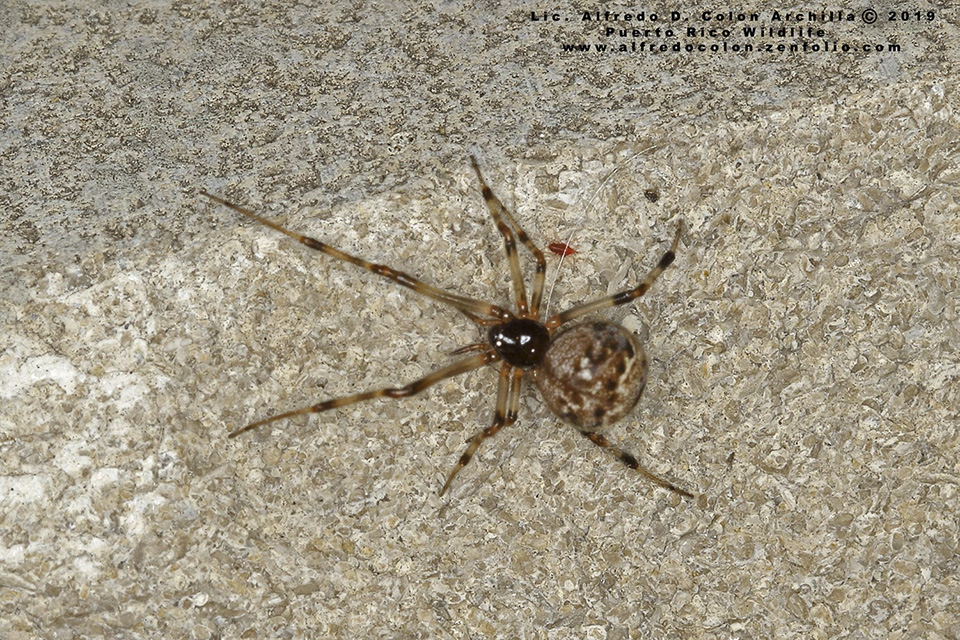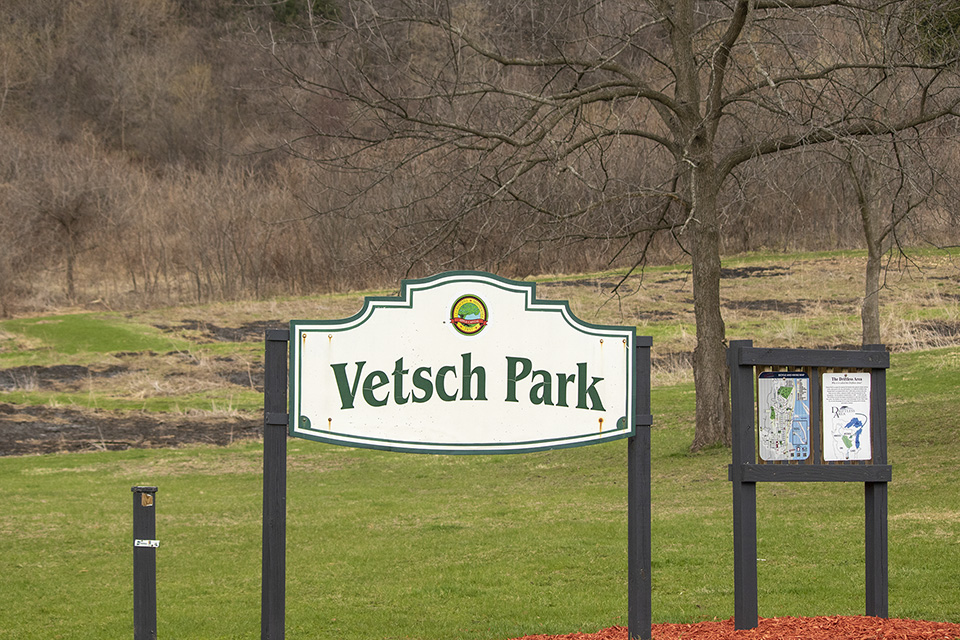
Vetsch Park is the second largest park in La Crescent Minnesota. At one time the location was an apple orchard. The owner donated the 25 acres to the City of La Crescent, and the park is named after him.
There is a parking area at the end of N. 2nd St. A short mowed trail leads west from the parking area, past a dog walking area, to a 0.52-mile loop trail. The loop trail passes through a red oak – white oak – silver maple forest as it climbs a steep bluff, follows a ridge line, and returns to the parking area. There are also several other intersecting trails within and south of the park. One of these trails leads to Stoney Point, a bald area with a spectacular view of La Crescent and the Mississippi River. The narrow ridge and steep bluff is characteristic of the topography of the driftless area in southeastern Minnesota and western Wisconsin.
http://www.minnesotaseasons.com/Destinations/Vetsch_Park.html

